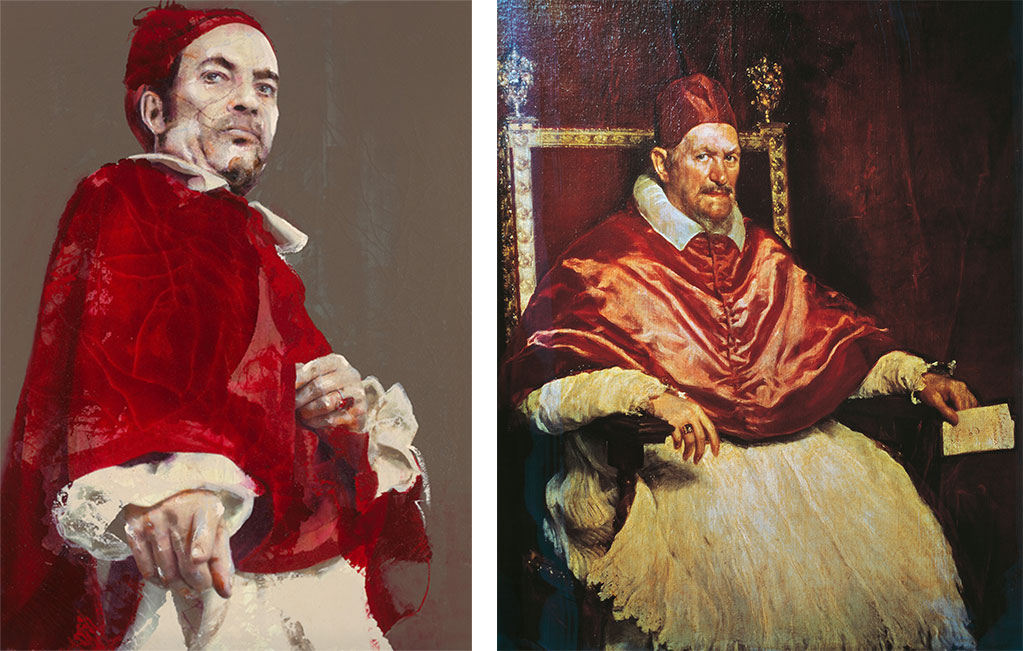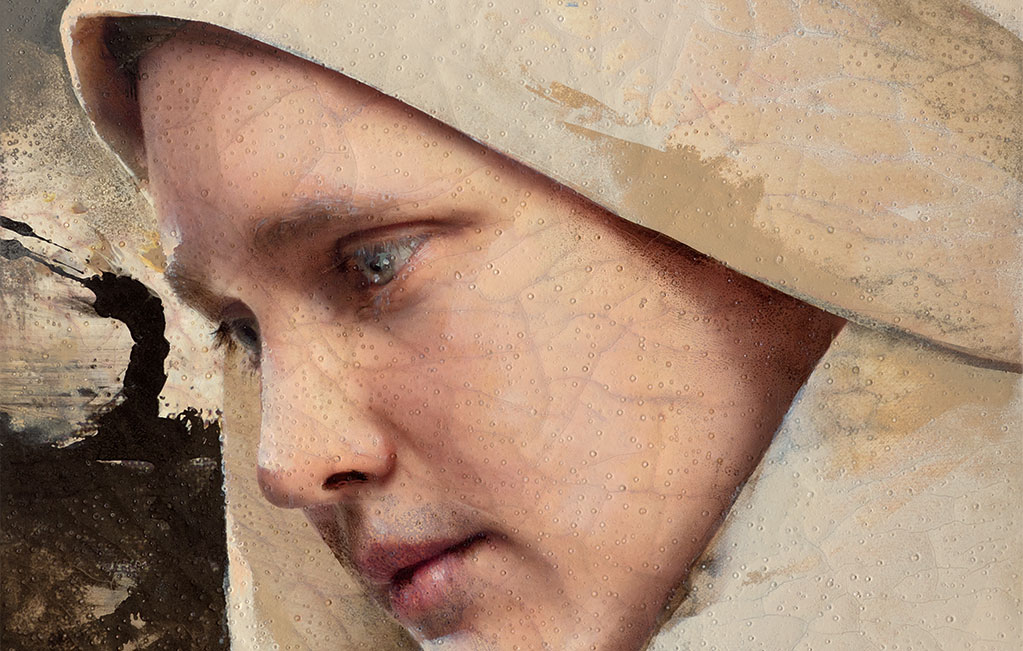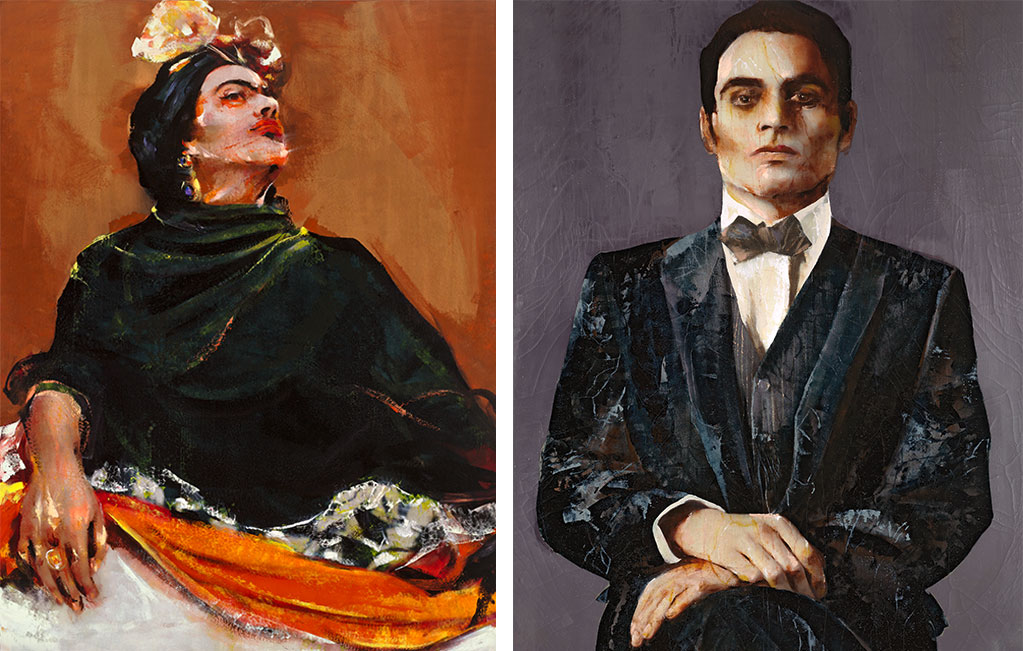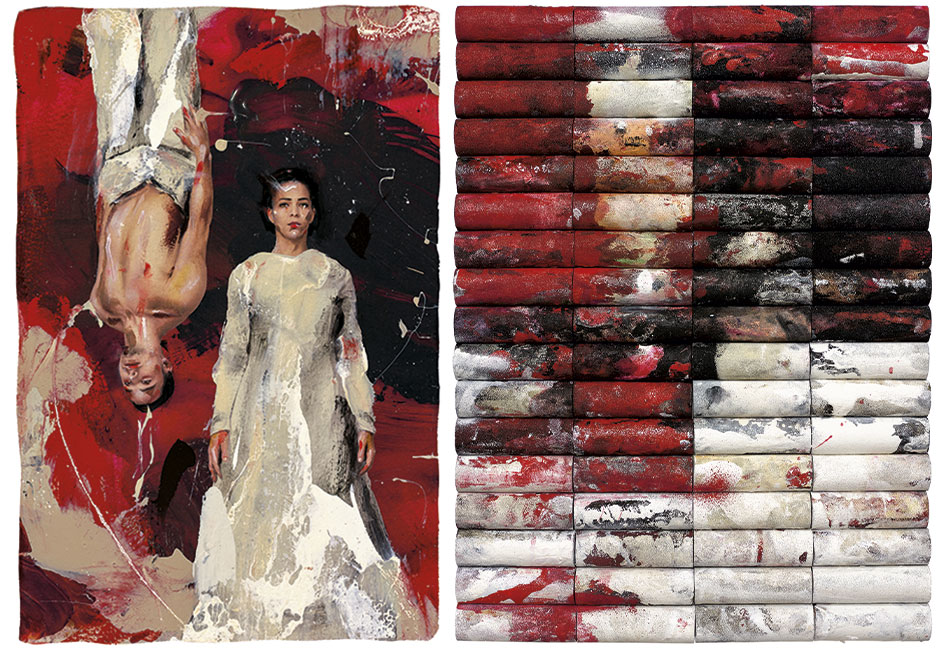Work, inspiration and boundless imagination: Lita Cabellut and Pablo Picasso
This month marks the anniversary of the birth of two groundbreaking artists: Pablo Picasso (Malaga, 25 October 1881) and Lita Cabellut (Sariñena, Huesca, 24 October 1961). Separated in time, united in their passion for creating their own rules.
A genius of 20th-century painting and one of today’s most outstanding artists have many things in common. To commemorate their birthdays, we take a look at the parallels between some of Picasso’s reflections and Lita Cabellut’s life and creative journey.
1. “The quality of a painter depends on the amount of past he carries with him” (Pablo Picasso).
In her formative years, Lita Cabellut explored Rembrandt and Goya’s use of black and chiaroscuro, while also delving into the expressive possibilities of portraiture through such diverse creators as Velázquez and Picasso.

Left. Trilogy of Doubt 06, 2013, Lita Cabellut.
Right. Portrait of Pope Innocent X, around 1650 Diego Velázquez. Doria Pamphilj Gallery, Rome.
With the latter she shares the images of acrobats, vagabonds and prostitutes, figures from the rougher side of life, which appear throughout Picasso’s oeuvre. The Málaga-born painter knew them well. Almost a century later and in the same setting (Barcelona’s El Raval neighbourhood), Lita Cabellut also knew how to capture their essence.
There was another artist and poet who also showed his fascination for the same type of lonely and forlorn characters, both in his writings and his drawings: Federico García Lorca.
2. “Painting is another way of keeping a diary” (Pablo Picasso)
Lita’s childhood was hard and marked the way she saw and told her story. In her own words, “to create you have to give yourself, to suffer, to learn to stop the beatings”.
She had her first painting lessons thanks to her adoptive family and, years later, she was able to attend the prestigious Gerrit Rietveld art academy in Amsterdam.
A girl born into a humble family thus became one of the most sought-after artists in Europe. Like Picasso in his day, Cabellut has developed her career far from her homeland. She settled in The Hague, where she continues to create in her studio.
Lita’s life is encompassed in her art. And the key to her artistic personality is her ability to convey emotions. “I am more than a painter: I am a storyteller”.
3. “Are we to paint what’s on the face, what’s inside the face, or what’s behind it?” (Pablo Picasso)
Lita learned to read the soul before drawing the first line of a portrait, which is why her art has been described as a revelation of the deepest and most hidden part of the human being.
This ability to capture nuances and emotions shines through in her depictions of iconic figures like Édith Piaf, Frida Kahlo and García Lorca, as well as in her portraits of fictional characters.
Left. Frida 25, 2010, Lita Cabellut.
Right. F. García Lorca 01, from the series Portrait of Human Knowledge, 2012, Lita Cabellut.
Her method begins by staging a scene in which the image that the artist has in her mind is recreated, involving the participation of real actors. This is the only way to bring to the surface the moments and expressions that Lita wants to convey on the canvas.
4. “Learn the rules like a pro, so you can break them like an artist” (Pablo Picasso)
Lita Cabellut’s creative process is constantly evolving, always in search of creative solutions to enrich her work. In this sense, Cabellut has explored several different fields, including chemical processes.

Left. Instalación Tempus & Divine, 2017, Lita Cabellut.
Right. Performance de La Perla Negra, 2010, Lita Cabellut.
Although painting is her main medium of expression, Lita is a multidisciplinary artist. She works in sculpture, poetry, photography and video. Her art has a physical quality, with textures serving as one of her favourite resources.
One of her hallmarks is craquelure. This technique, reminiscent of the effect of the passage of time on a fresco painting, conveys the sensation of being in front of cracked earth and lends a sense of timelessness to her paintings.

Johanna van Delft (detail), from the series Black Tulip, 2014, Lita Cabellut.
Another contribution that broadens the conceptual dimension of her work is her incorporation of complementary images, the “traces”, created by the rollers she uses to apply paint: “I have tried to turn my working materials into poetry”.
Left. The link, 2017. Mixed technique on paper 60 x 40.4 cm. Liata Cabellut.
Right. The link, its trace, 2018. Mixed technique on panel 60 x 45.4 cm. Lita Cabellut.
5. “Everything that can be imagined is real”
The story of Blood Wedding is inspired by a real event. Federico García Lorca read a story in the press about a wedding that had a fateful end. Thus arose a play that hasn’t stopped moving audiences ever since its debut in 1933.
Lita Cabellut accepted the challenge of translating Lorca’s tragedy into images, and the result is a ground-breaking interpretation of the classic.
After four years of hard work and passion, she turned a literary classic into a work of art.
Blood Wedding is a limited edition that includes 90 prints created exclusively by the artist: 90 images created with style, heart and expressive power.



